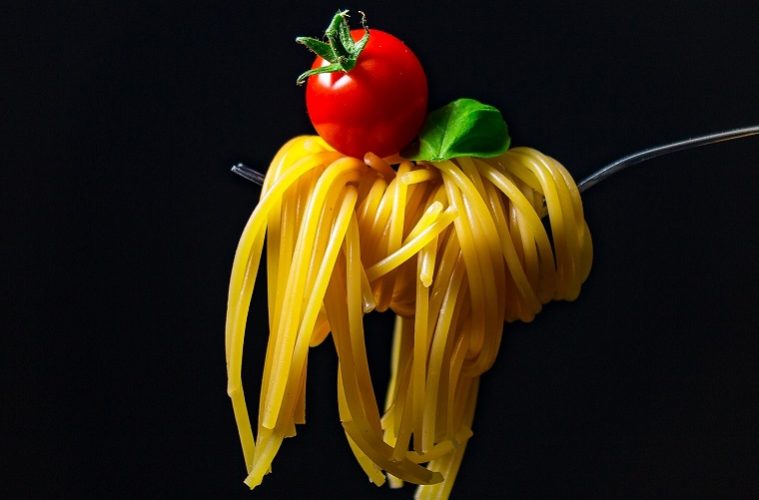Pastina | There are many different varieties of pasta. Traditionally made from egg, flour and water, substitute ingredients include duck egg, durum wheat and semolina. Colour and flavour can be added using beetroot (pink), cocoa (chocolate), herbs, peppers (orange-red) and saffron (golden).
Pasta comes in a variety of shapes and sizes too, from long and large to the mini pastina.
In Italian, all pasta names are plural, and those of smaller versions often end with masculine suffixes (-ini, -elli, -illi, -etti) or female (-ine, -elle, ille, -ette). Larger versions end with -oni or -otti (largish).
The language of this food of love sounds beautiful, no matter what the translation. Here are some of our favourites.
Long pasta is made by extrusion, or rolling and cutting.
Barbina (little beards) are thin strands often coiled into nests. Capelli d’angelo (angel hair) are thin, as is fedelini (little faithful ones). Maccheroni alla molinara (the miller’s wife’s pasta) is very thick, long, fresh hand-pulled pasta. Not quite such appetising translations include vermicelli (worms) and the thicker vermicelloni (large worms).
Ribbon style pasta is often rolled flat and then cut, either by hand or mechanically.
Fazzole (handkerchief) are thin rectangles or squares of pasta. We’re all familiar with Lasagna, with or without fluted edges, but its lesser-known variations include lasagnette (little lasagne) and lasagnotte (bigger lasagne).
Pasta is delicious and servings in Italy are generous, so the word pappardelle, thick flat ribbons of egg-based dough is appropriately derived from the Tuscan papparsi, or to pig out.
Short-cut pasta includes anelli and anelletti (rings and small rings) and the slightly less appealing calamarata (squid-like) and calamaretti (little squids).
Fusilli bucati are, as their translation suggests, holed spindles, and quite beautiful. Trenne is a triangular shaped penne, and ziti, long narrow tubes, translate as bride and bridegroom in Sicilian dialect.
To serve a truly beautiful dish, opt for a decorative cut of pasta such as campanelle (shaped like a cala lily), the bell-shaped sorprese (surprise) or the conical castellane (castle dweller). Radiatori are shaped like old-fashioned radiators and were created between the First and Second World Wars.
Su Filindeu is the world’s rarest pasta, made of 256 equal strands of thinly-pulled and folded dough, that has been laid to dry in the sun. The translation is threads (or wool) of God.
With further pasta choices including miniature pastina and ravioli to try, we could soon resemble pansotti (big bellies).

